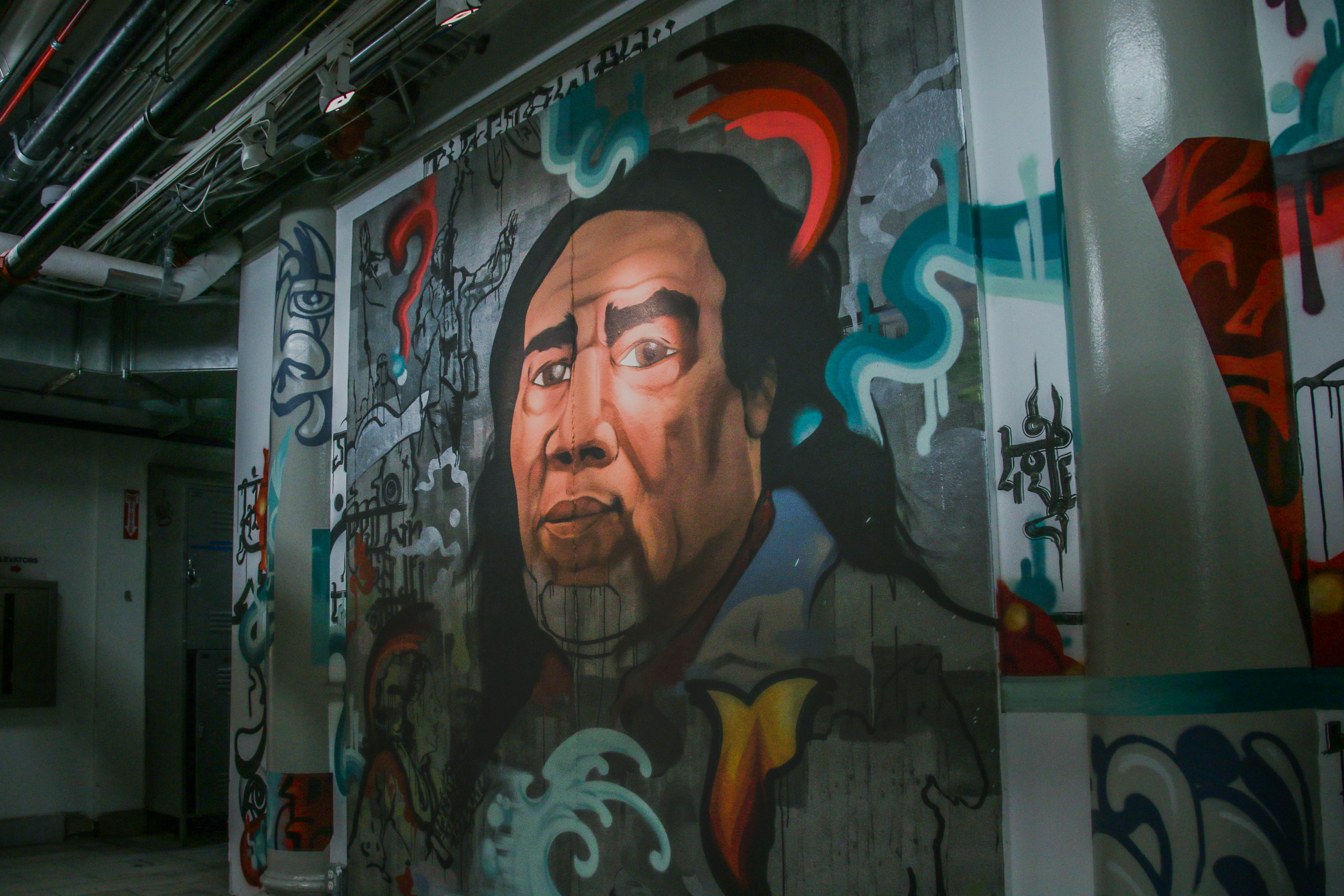By: Aseeli Coleman (Exhibition Design M.A. '20)
The rich Native American history in the United States often gets overshadowed. However, America would not exist as it does today without the sacrifices and contributions of those who are native to this land.
Washington, D.C., has a rich Native American history as the Piscataway Nation once held great power here. While this is something that the average D.C. resident might not know, groups such as the AT&T Center for Indigenous Politics and Policies (AT&T CIPP) at the George Washington University (GW) are working to remedy that.
A mobile app developed by AT&T CIPP provides an in-depth look at historic Native American sites throughout the capital and highlights artist Joerael Numina’s work, a mural made in collaboration with members of the Piscataway Nation, on the ground floor of the Corcoran School of the Arts and Design at GW.
This kaleidoscope of color honors the rich history of the Piscataway Nation and their complex experience with the violence of colonizers in North America. The mural also highlights diversity and features the significant contributions of multiple members from the Piscataway Nation.
Numina’s work is intended as a visual land acknowledgment and a collaborative narrative visualization of the Piscataway People whose ancestral lands lay where Washington DC and surrounding urban areas exist today. So what exactly is a land acknowledgment? A land acknowledgment is a formal statement that recognizes the ancestral land of the Indigenous Peoples, who both historically and presently reside on the lands.
Numina describes graffiti, an element in the visual language of the mural, as “the first global networked form of non-discriminating visual expression.” The universality of this medium is meant to represent the various walks of life that the mural seeks to honor. The graffiti in the mural also represents the bombardment that the Piscataway people have endured since the beginnings of colonization.
Conceptually, Numina’s mural poses the question, “How can we witness the way we dance upon this particular place and the Earth as a whole?” Prompting viewers to think about ways we can honor the past inhabitants of the spaces we currently occupy. Additionally, it encourages thinking about how to create a global culture that considers the well-being of past and future generations on this earth.
A visionary disruptor and art entrepreneur, Joerael creates art that matters in all its forms from mixed media drawings and paintings to large-scale mural projects. The founder of a project called Mobilize Walls launched in the days following in the 2018 election, Joerael's network of fast-growing murals is now 40,000 feet long and acts as a petition of scale. Indeed, his project is the polar opposite of Trump’s proposed wall; it’s decentralized, transformative, inclusive, healing—bridging versus building borders between communities. “All the work I’m trying to do is about transformation, unity, and inclusiveness.
All are welcome to view this new addition and contemplate how we can better recognize and respect the members of the Piscataway Nation.
To view the mural, please email the Corcoran team at corcexhibits gwu [dot] edu (subject: Joerael%20Elliot%20Mural%20Viewing%20) (corcexhibits[at]gwu[dot]edu) to arrange a private showing; public hours will be coming in the future.
gwu [dot] edu (subject: Joerael%20Elliot%20Mural%20Viewing%20) (corcexhibits[at]gwu[dot]edu) to arrange a private showing; public hours will be coming in the future.
The Corcoran School of the Arts and Design:
Flagg Building
500 17th Street, NW
Building hours:
7am-11pm (Monday-Friday)
9am-9pm (Saturday-Sunday)


